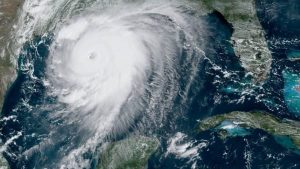COVID And Now Hurricane Laura
The U.S. Texas and Louisiana Gulf coast region is this evening undergoing mandatory coastal evacuation procedures in the wake of Hurricane Laura, now a Category Four storm with catastrophic strength.
Peak winds are forecasted to be as high as 150 miles per hour (240 kilometers per hour) accompanied by a possible 15-foot water surge at time of landfall with forecasters now warning of lethal flooding and wind damage. Reports point to the potential of upwards of billions of dollars in potential property loses.
Hundreds of thousands of people are reportedly at risk.
As if the COVID-19 disruption was not enough, multi-industry supply chain management teams must now prepare for whatever affects come from this major storm
From a supply network perspective the threatened area includes the epicenter of U.S. oil refining and petrol-chemical facilities, along with the major port areas of Houston and New Orleans. Facilities that are in the path of the storm are already closed and making appropriate preparations including the largest refinery complex in the United States, Saudi Aramco’s Motiva refinery.
Comparisons are already being made to Hurricane Katrina that occurred in 2005 or Hurricane Harvey that occurred in 2017, each storm of similar magnitude which resulted in upwards of $150 billion in property damage, loss of life and multi-days of industry supply chain disruption.
Read more at COVID And Now Hurricane Laura
Share your opinions with us by leaving a comment below. Be the first one to get our updates, subscribe to us now!










